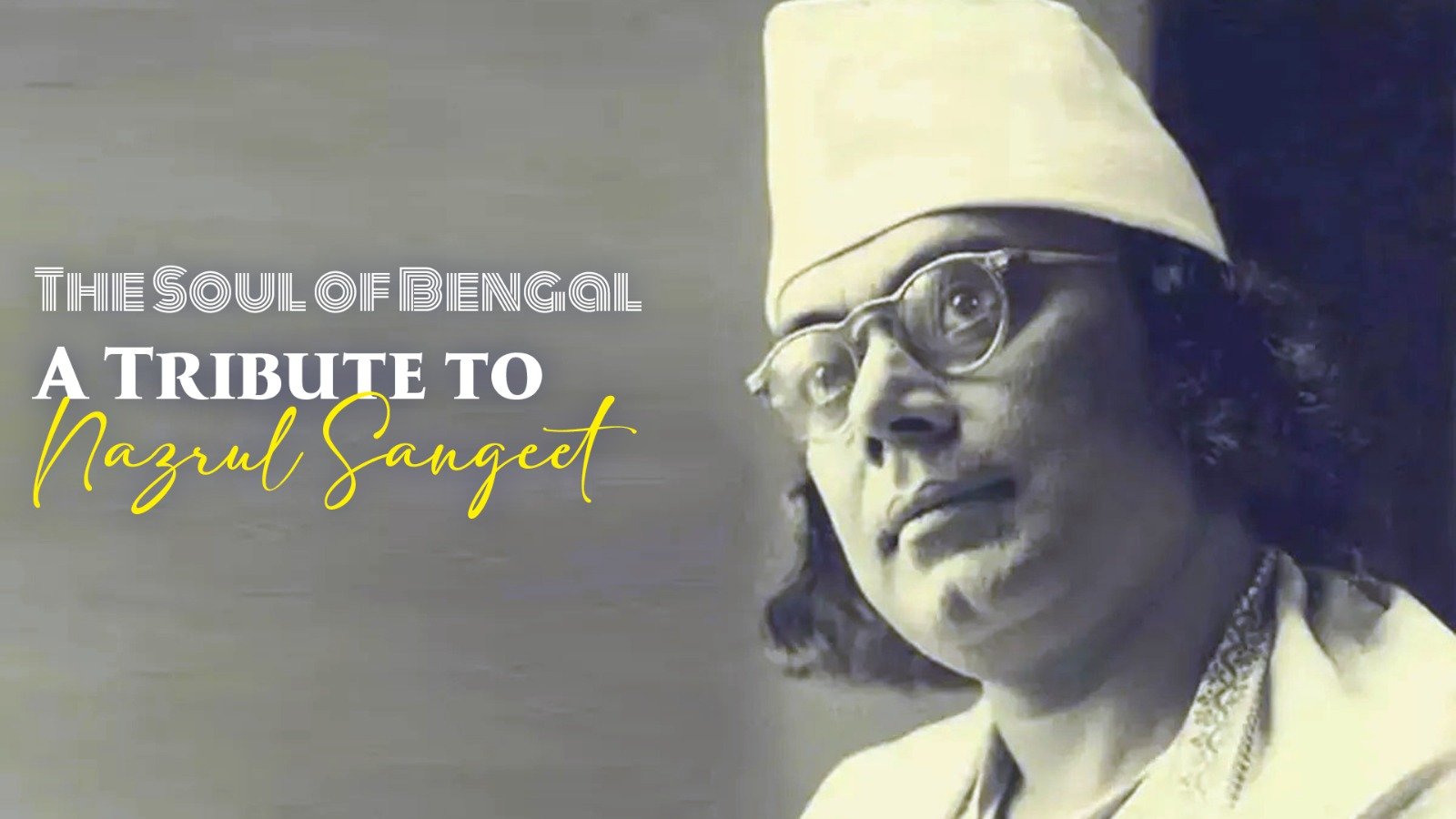Nazrul Sangeet, the musical legacy of Kazi Nazrul Islam — the Rebel Poet of Bengal — is more than just a genre. It is a soulful blend of passion, patriotism, devotion, and emotion, encapsulated in over 4,000 songs written and composed by Nazrul himself. These songs continue to resonate with listeners across generations, forming an integral part of Bengal’s cultural identity. Nazrul's music broke barriers. At a time when society was divided along religious and social lines, he composed both Islamic devotional songs and Shyama Sangeet with equal devotion. His melodies championed unity, secularism, and love for humanity. With influences from Hindustani classical, folk traditions, and even Western elements, Nazrul Sangeet stands out for its rich musical diversity. Lyrically, his songs are powerful and poetic. Whether it’s the revolutionary "Karar Oi Louho Kopat" inspiring freedom fighters, or the devotional "Bagichay Bulbuli Tui", each piece carries deep emotional weight. His romantic and nature-themed songs beautifully capture the essence of love, longing, and the beauty of rural Bengal. What sets Nazrul Sangeet apart is its ability to express every shade of human emotion — from rebellion to romance, from divine devotion to earthly sorrow. Singers require not just vocal skill, but emotional depth to truly bring these songs to life. In modern times, while Rabindra Sangeet often dominates the cultural spotlight, efforts are growing to revive and preserve Nazrul’s music. Artists, institutions, and festivals dedicated to Nazrul Sangeet are working tirelessly to bring his timeless compositions to younger audiences. Nazrul Sangeet is not just music — it's a philosophy, a movement, and a treasure trove of Bengal’s collective spirit. Listening to it is not merely an auditory experience but a soulful journey through history, emotion, and the enduring power of art.
The Soul of Bengal: A Tribute to Nazrul Sangeet
Jesica Sen
||
Post On > Sep 1 2025 ||


asd
2025-10-13 02:40:59

The Soul of Bengal: A Tribute to Nazrul Sangeet
2025-09-01 13:45:33

The Psychology of Singing: How Your Mood Shapes Your Voice
2025-08-20 11:02:30

Respecting Stage Artists: The Heartbeat Behind Every Performance
2025-08-06 11:30:17

1
2025-07-30 11:24:31

Uttam Kumar Movie Songs: The Golden Voice of Bengali Cinema
2025-07-24 11:39:01